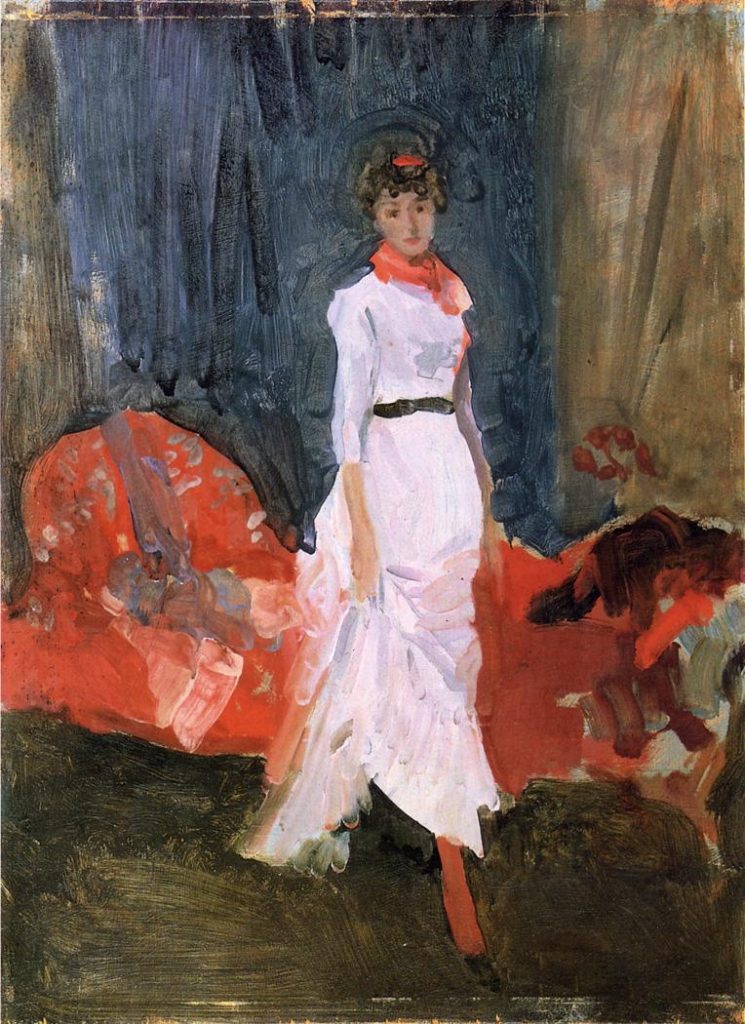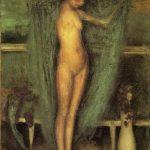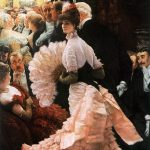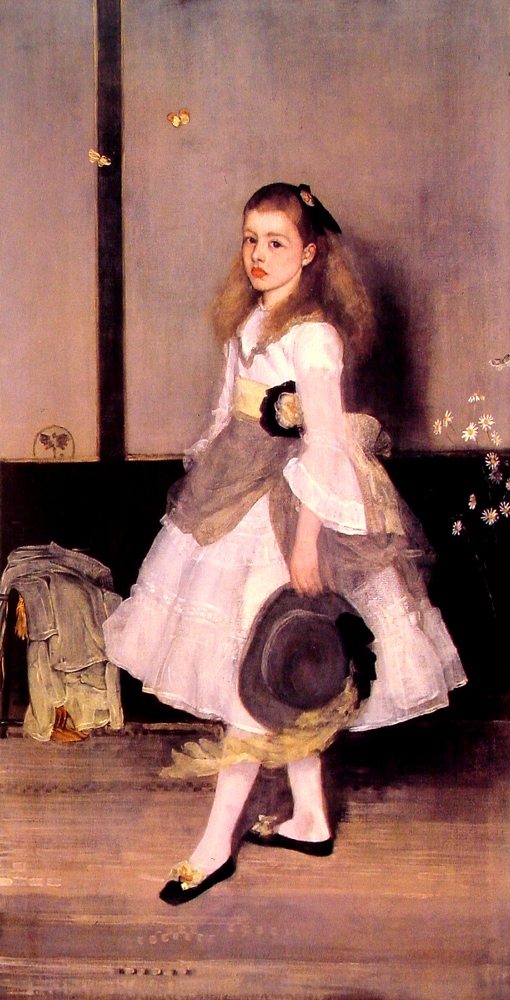
James McNeill Whistler (1834-1903) was an American-born artist who is best known for his contributions to the art world as a painter and printmaker. He was a prominent figure in both the American and European art scenes during the 19th century and is particularly noted for his work in the realms of portraiture, landscape painting, and etching. Whistler was associated with several art movements, including Realism and Aestheticism, and his work played a significant role in the development of modern art. Here are some key points about James McNeill Whistler:
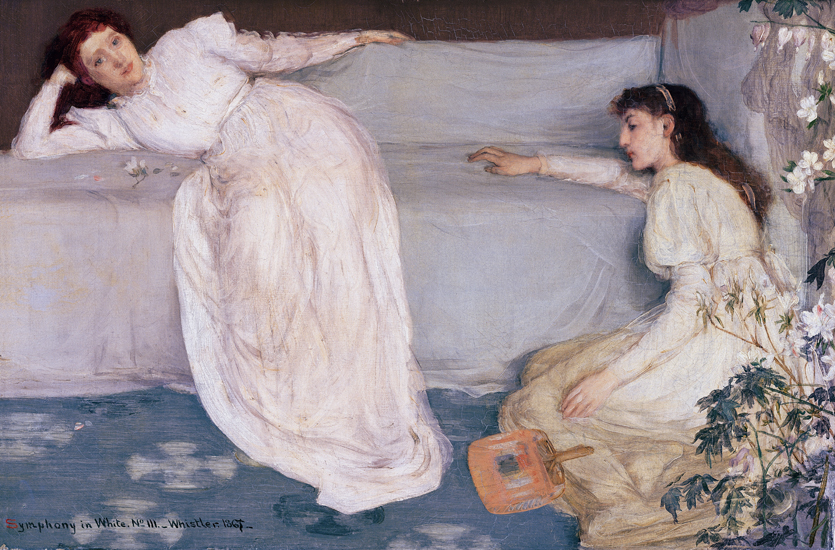
- Early Life and Education: Whistler was born in Lowell, Massachusetts, but he spent much of his childhood in St. Petersburg, Russia, where his father worked as an engineer. He later returned to the United States and attended the United States Military Academy at West Point, but he left the academy without graduating. He then pursued a career in art.
- Artistic Training: Whistler studied art in Paris and eventually settled in London, where he developed his distinctive style and gained recognition as an artist.
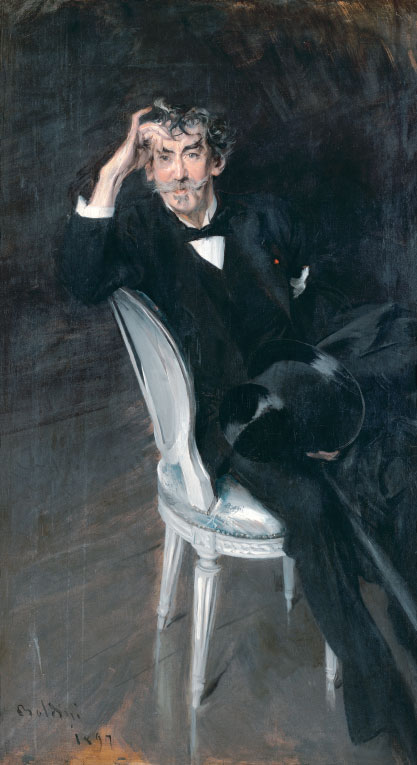
- Whistler’s Style: Whistler’s style evolved over his career, and he is known for his emphasis on harmonious color palettes and a refined, detailed approach to his subjects. He is often associated with the Aesthetic movement, which focused on the importance of beauty and visual appeal in art and everyday life.
- Portraits: One of Whistler’s most famous works is the painting “Arrangement in Grey and Black No. 1,” also known as “Whistler’s Mother.” This iconic portrait depicts his mother seated in profile. The painting is known for its subtle tonal variations and use of a limited color palette.
- Nocturnes: Whistler was also known for his “Nocturne” series, which featured nighttime scenes with a focus on the effects of light and color. These paintings, such as “Nocturne in Black and Gold: The Falling Rocket,” were groundbreaking in their abstract approach to landscape.
- Etchings: Whistler was an accomplished etcher and produced a significant body of etchings during his career. His skill in this medium earned him recognition in the art world.
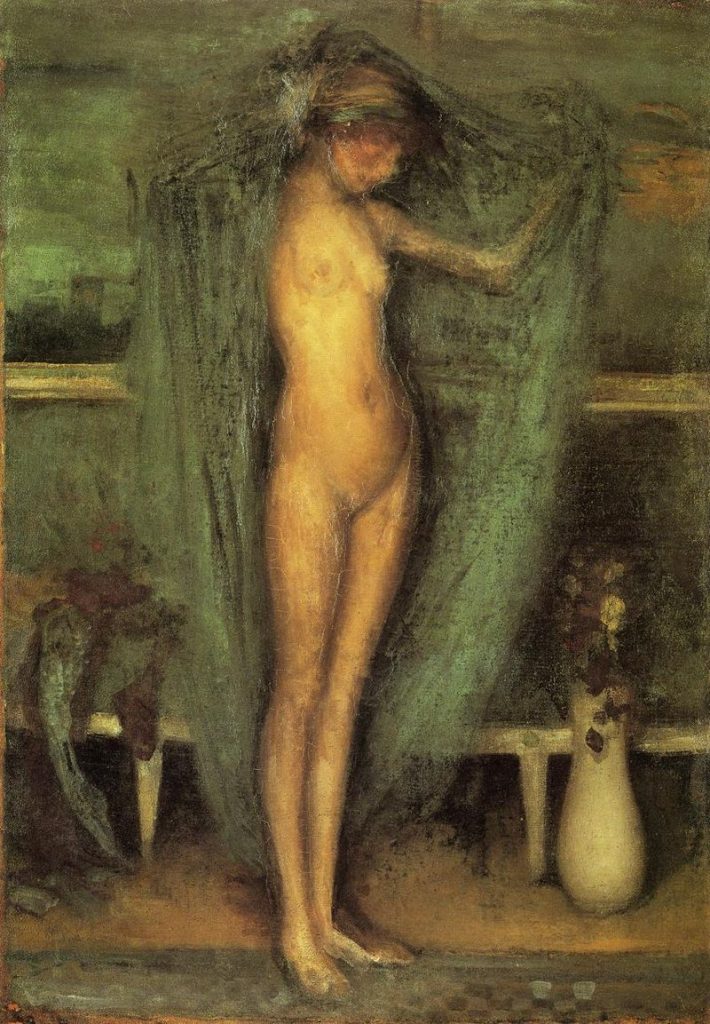
- Legal Battles: Whistler was involved in a famous lawsuit with the art critic John Ruskin, who had criticized his painting “Nocturne in Black and Gold.” Whistler won the case but was awarded only a farthing in damages, leading to the popular phrase “Whistler’s Mother” being more valuable than a “Whistler.”
- Legacy: James McNeill Whistler’s work had a profound influence on modern art. His emphasis on the aesthetics of art, his attention to composition and color, and his innovative approaches to painting and printmaking made him a pivotal figure in the transition from 19th-century academic art to the more experimental and modern art of the 20th century.
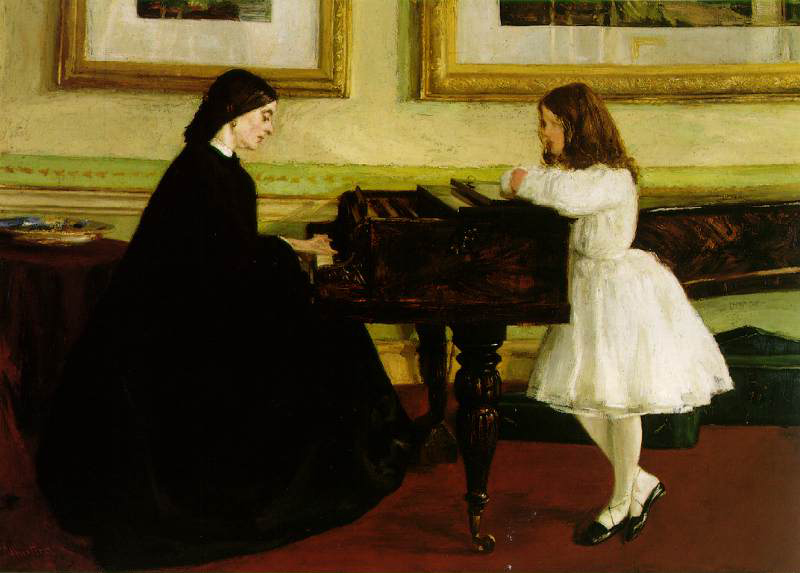
James McNeill Whistler remains an important figure in the history of art, and his works can be found in major art museums and collections around the world. His contributions to the development of modern art, particularly in the realm of portraiture and nocturnal scenes, are widely recognized and appreciated.
